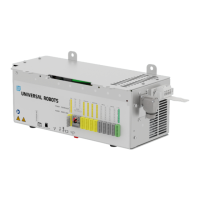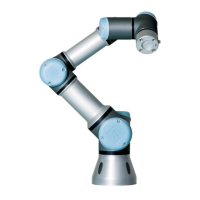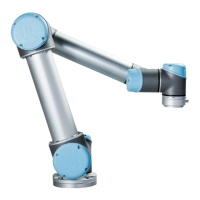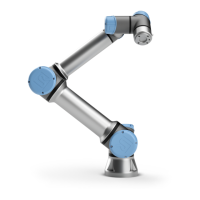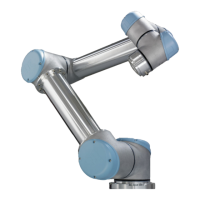Description The tool communication interface allows two digital outputs to be independently
configured. In PolyScope, each pin has a drop-down menu that allows the output mode to
be set. The following options are available:
•
Sinking: This allows the pin to be configured in an NPN or Sinking configuration.
When the output is off, the pin allows a current to flow to the ground. This can be
used in conjunction with the PWR pin to create a full circuit.
•
Sourcing: This allows the pin to be configured in a PNP or Sourcing configuration.
When the output is on, the pin provides a positive voltage source (configurable in
the IO Tab). This can be used in conjunction with the GND pin to create a full
circuit.
•
Push / Pull: This allows the pin to be configured in a Push / Pull configuration.
When the output is on, the pin provides a positive voltage source (configurable in
IO Tab). This can be used in conjunction with the GND pin to create a full circuit
When the output is off, the pin allows a current to flow to the ground.
After selecting a new output configuration, the changes take effect. The currently loaded
installation is modified to reflect the new configuration. After verifying the tool outputs are
working as intended, make sure to save the installation to prevent losing changes.
Dual Pin
Power
Dual Pin Power is used as a source of power for the tool. Enabling Dual Pin Power disables
default tool digital outputs.
8.10. End Effector Integration
Description The end effector can also be referred to as the tool and the workpiece in this manual.
NOTICE
UR provides documentation for the end effector to be integrated with the
robot arm.
•
Refer to the documentation specific to the end
effector/tool/workpiece for mounting and connection.
User Manual 90 UR30
Copyright © 2009–2024 by UniversalRobotsA/S. All rights reserved.
